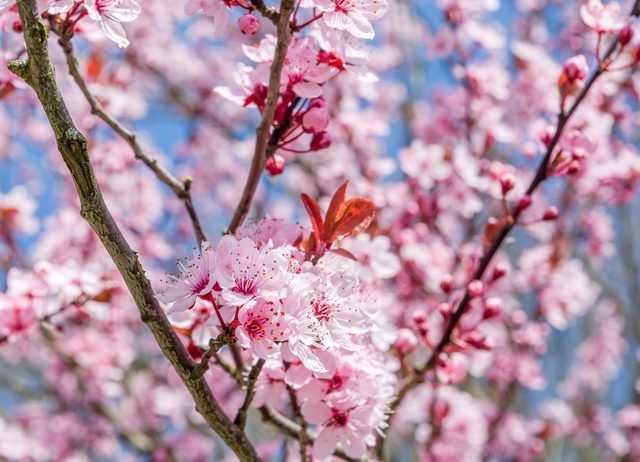Bulbs
Flower Basics
Flower Beds & Specialty Gardens
Flower Garden
Garden Furniture
Garden Gnomes
Garden Seeds
Garden Sheds
Garden Statues
Garden Tools & Supplies
Gardening Basics
Green & Organic
Groundcovers & Vines
Growing Annuals
Growing Basil
Growing Beans
Growing Berries
Growing Blueberries
Growing Cactus
Growing Corn
Growing Cotton
Growing Edibles
Growing Flowers
Growing Garlic
Growing Grapes
Growing Grass
Growing Herbs
Growing Jasmine
Growing Mint
Growing Mushrooms
Orchids
Growing Peanuts
Growing Perennials
Growing Plants
Growing Rosemary
Growing Roses
Growing Strawberries
Growing Sunflowers
Growing Thyme
Growing Tomatoes
Growing Tulips
Growing Vegetables
Herb Basics
Herb Garden
Indoor Growing
Landscaping Basics
Landscaping Patios
Landscaping Plants
Landscaping Shrubs
Landscaping Trees
Landscaping Walks & Pathways
Lawn Basics
Lawn Maintenance
Lawn Mowers
Lawn Ornaments
Lawn Planting
Lawn Tools
Outdoor Growing
Overall Landscape Planning
Pests, Weeds & Problems
Plant Basics
Rock Garden
Rose Garden
Shrubs
Soil
Specialty Gardens
Trees
Vegetable Garden
Yard Maintenance
Thundercloud Plum Tree Care
'Thundercloud' plum is an attractive, short-lived ornamental tree that requires moderate care and maintenance to look its best.

Also known as cherry plum, 'Thundercloud' (Prunus cerasifera 'Thundercloud') is a striking deciduous plum cultivar that boasts dark purple leaves, scores of early spring booms and small edible plums. Even with proper care and maintenance, 'Thundercloud' is a short-lived tree that usually begins to decline after 10 to 15 years.
Plant in a Sunny Site
'Thundercloud' grows in U.S. Department of Agriculture plant hardiness zones 5 through 8, where it will grow in full or partial sun. The rich purple leaves will be at their most vibrant in a spot with full sun -- in shade leaves will turn greenish rather than purple. If you're planting multiple plums, provide 18 to 22 feet of space in between trees. Fruit and foliage can create a mess, so plant the tree away from walkways and patios to avoid extra clean-up.
Use Well-Draining Soil
Plant 'Thundercloud' in a well-draining soil. In poor, compact soil, 'Thundercloud' is more likely to attract boring insects. Poorly draining soil also increases the risk of fungal diseases such as rot. Water regularly to keep the soil moist, but not waterlogged or flooded. 'Thundercloud' is moderately drought tolerant but will become stressed during long dry periods.
Fertilize Regularly
During the plum's first year, fertilize in early spring with 1 cup of a 10-10-10 fertilizer spread evenly in a circle with a diameter of about 3 feet. Fertilize again with 1/2 cup of ammonium nitrate or calcium nitrate in a circle about 2 feet in diameter. Always water the area well after spreading fertilizer.
From the second year on, fertilize in early March and early August. In March, apply 1 cup of a 10-10-10 fertilizer per year of tree's age, not exceeding 12 cups. In August, apply 1 cup of calcium nitrate or ammonium nitrate per year of tree's age, not exceeding 6 cups. Apply fertilizer in a circle as wide as the tree's canopy, keeping fertilizer from concentrating next to the trunk. Store unused fertilizer in a secure location away from children and pets.
Check for Pests
'Thundercloud' is susceptible to a wide range of pest infestations. Pests such as scale insects, cottony or hard insects that form dense colonies on branches; mites, tiny sap-sucking pests; aphids, sap-sucking insects that feed on new growth; and tent caterpillars, which chew holes in leaves, may all be controlled with horticultural oil.
Mix 2 1/2 to 7 1/2 tablespoons of horticultural oil in 1 gallon of water and pour it into a backpack sprayer. Wear long sleeves, long pants and goggles and spray evenly over to wet the tops and undersides of branches, main limbs and trunk. Apply when the trees are dormant -- before blossom buds show green -- or when trees are delayed dormant -- when blossom buds have emerged 1/4 to 1/2 inch. Store unused oil away from children and pets and follow the label's instructions carefully.
Warning
To reduce possible damage to the plum tree, do not apply horticultural oil when plants are stressed or developing new shoot growth.
Do not apply horticultural oil when temperatures are above 100 degrees Fahrenheit or during freezing conditions.
Keep It Clean and Tidy
Common plum fungal diseases such as black knot, which causes warty growths on 'Thundercloud' branches, and brown rot, which causes cankers and rotten fruit, can be managed by following good sanitation practices. Rake up and destroy fallen fruits and leaves, which may harbor diseases, and prune out and destroy limbs with fungal growth. Remove any dried out plums that remain on the tree.
Tip
To prevent the spread of fungal spores to healthy plants, disinfect pruning equipment by soaking tools for five minutes in a solution that is equal parts rubbing alcohol and water. Rinse with clean water and allow the tools to air dry.